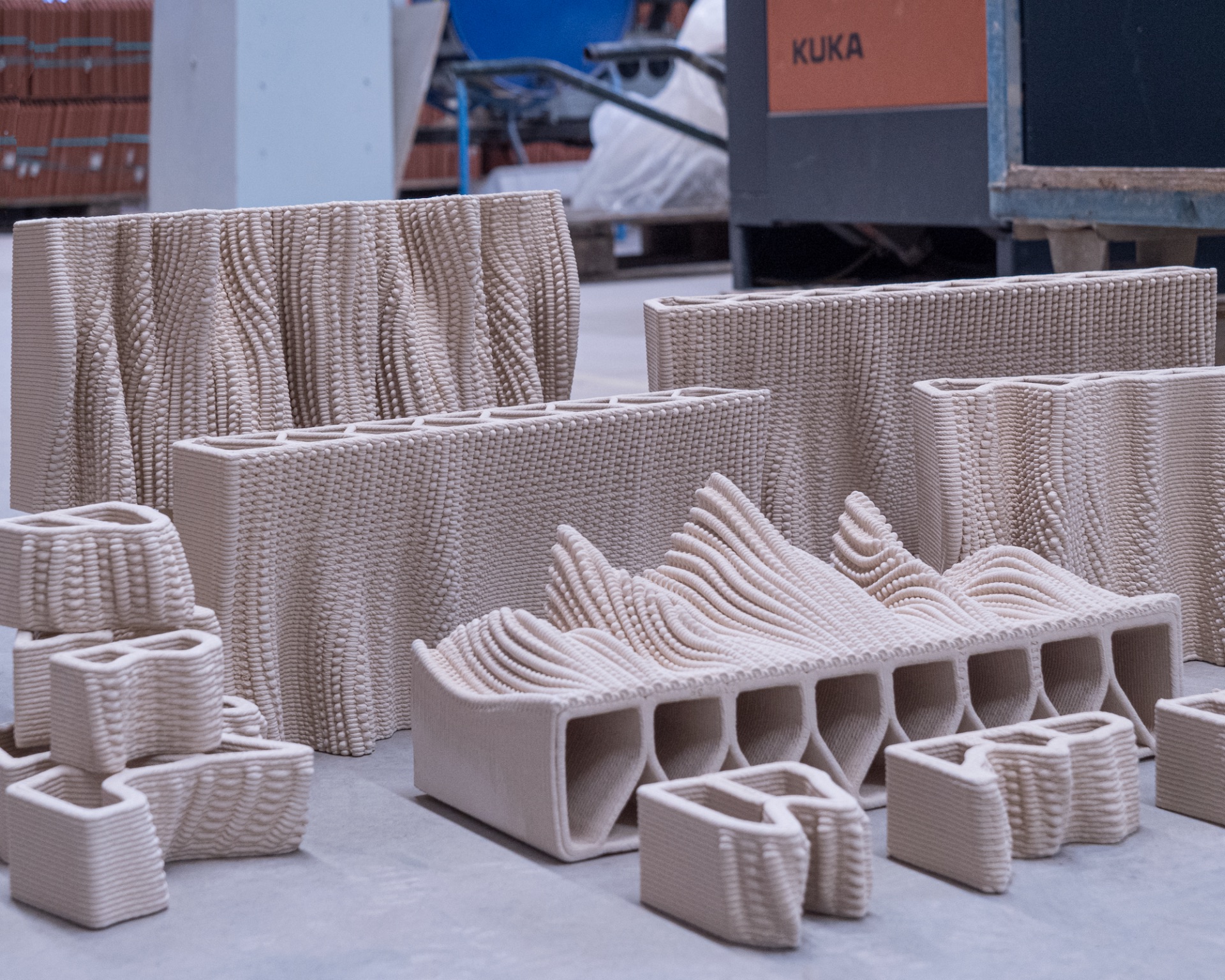- Studio RAP’s Innovative Project: A blend of historic architecture and advanced 3D printing technology in Amsterdam.
- Unique 3D Printed Façade: A striking façade featuring bespoke ceramic tiles, inspired by the art of knitting and the Rijksmuseum’s ceramic collection.
- Harmonious Blend with Historic Setting: Meticulous integration with the city’s architectural heritage and urban landscape.
- Advanced Digital Fabrication: Combining robotics and digital algorithms for a distinctive architectural expression.
In the heart of Amsterdam, on the prestigious P.C. Hooftstraat, Studio RAP has embarked on an ambitious project that marries the elegance of historic architecture with the cutting-edge capabilities of 3D printing technology. This innovative approach has not only created a new architectural landmark but has also set a new standard in the field of digital fabrication.

A Tribute to Traditional Craftsmanship through Modern Technology
At the core of this project lies the façade, a masterpiece comprising an intricate array of three-dimensional ceramic tiles. These tiles, inspired by the craft of knitting, showcase complex patterns that mimic the interlooping yarns and stitch patterns of textiles. This design pays homage to traditional craftsmanship while showcasing the possibilities of modern technology.

Echoing the Past, Embracing the Future
The façade’s design is deeply rooted in the city’s architectural heritage. The choice of material draws inspiration from the Rijksmuseum’s celebrated ceramic collection, while the color and texture of the tiles are carefully chosen to blend with the surrounding urban fabric. The building maintains its original tripartite configuration, ensuring a seamless integration with the historical context of the street.

Advanced Robotic Systems and Digital Design
Studio RAP’s commitment to innovation is evident in their use of advanced robotic systems, coupled with in-house digital design algorithms. This unique combination has enabled the creation of the façade’s complex ceramic tiles, each a testament to the precision and possibilities of digital fabrication.

A Dynamic, Interactive Experience
The façade’s three-dimensional tiles create an organic, wave-like pattern that changes perception as one moves around it. This dynamic interaction adds a sculptural quality to the building, making it not just an architectural statement but an immersive experience for passers-by.

Sustainable and Contextual Material Use
In line with sustainable architectural practices, the choice of materials and the fabrication process reflect a commitment to environmental responsibility. The ceramic tiles, chosen for their durability and aesthetic appeal, also resonate with the historical context, ensuring that the building remains a timeless piece of the city’s urban landscape.
H/T Yatzer



